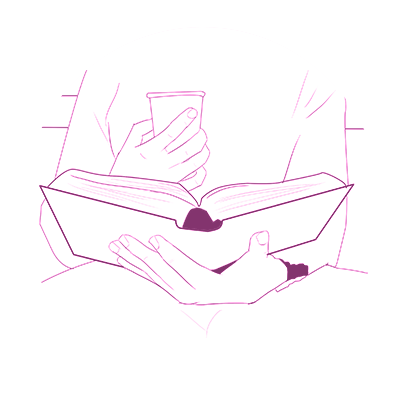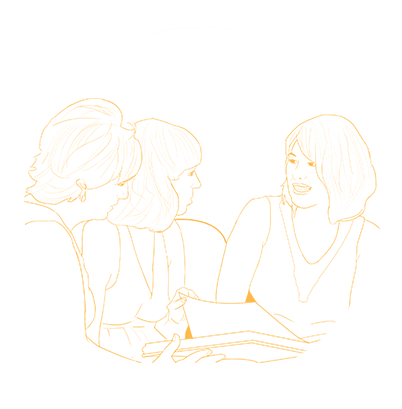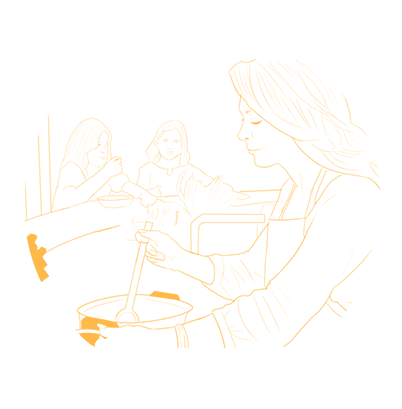
Inspired By Janssen
ARE YOU READY TO GET A GLIMPSE OF WHAT IT IS LIKE TO LIVE WITH PAH?


UNDERSTANDING PAH
"IT'S LIKE CLIMBING A MOUNTAIN...LIKE SOMETHING IS PUSHING YOU BACK ALL THE TIME." - PATIENT WITH PAH
Our bodies are amazing at doing what we want them to. When we run for a bus, or reach for our phones, our bodies instantly translate the oxygen we breathe and our energy reserves into coordinated movement, and we don’t have to give it a second’s thought.
It may be hard to believe, but for people living with PAH simple everyday tasks that you and I take for granted can feel as tough as climbing the summit of Everest.
WHAT IS PULMONARY ARTERIAL HYPERTENSION (PAH)?
PAH IS A SERIOUS CONDITION THAT AFFECTS THE BLOOD VESSELS THAT CARRY BLOOD FROM THE HEART TO THE LUNGS.
To understand more about PAH, first it helps to understand how the heart works.
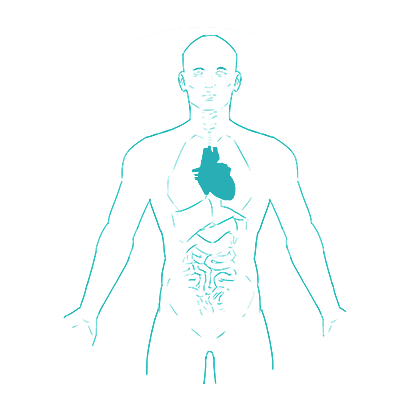
- WHAT IS PAH?
-
- THE ROLE OF THE HEART
-
The heart pumps blood to the whole body. The heart is a big muscle that is divided into 2 parts—a left and right side. It is responsible for pumping blood to the lungs and around the body. The whole system is called blood circulation. When a person has PAH, it means that the blood pressure between the right side of the heart and the lungs is increased as a consequence of changes in the blood vessels in this part of the circulation.
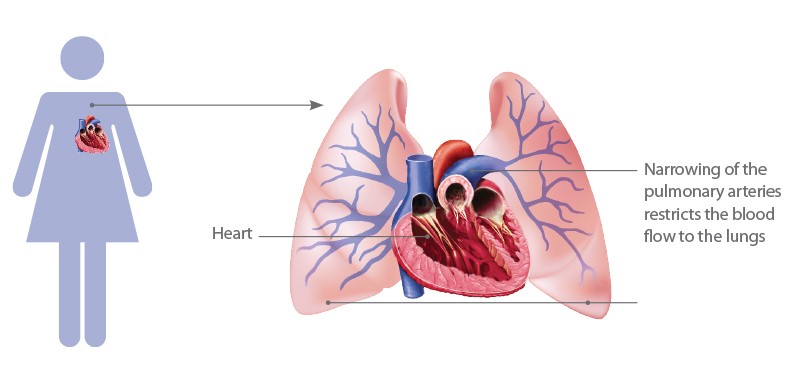
- WHAT HAPPENS TO THE PULMONARY ARTERIES IN PAH?
-
As PAH develops, the pulmonary arteries become narrow. The walls of these vessels also become thicker and less flexible. This narrowing of the pulmonary arteries restricts the blood flow to the lungs, which makes it harder for the heart to pump blood through the arteries. Trying to maintain the blood flow, the heart has to pump with higher pressure.

Adapted from Galiè N, et al. Eur Heart J 2010; 31:2080-6.
- HOW DOES THIS CAUSE THE SYMPTOMS OF PAH?
-
The right side of the heart has to work harder to pump blood, with a higher pressure, through these vessels and into the lungs. This causes the right side of the heart to become thicker and enlarged. In some cases, over a period of time, the heart can become tired and overworked. Less blood will circulate through the lungs, picking up less oxygen overall. This may make people with PAH feel tired and breathless. If PAH is not treated, the heart can wear out from the effort of trying to pump blood through the lungs.
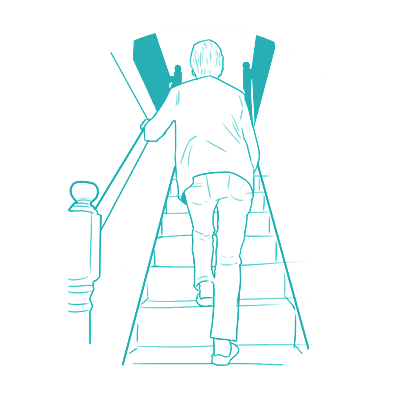
SIGNS AND SYMPTOMS OF PAH
THE FIRST SYMPTOMS ARE OFTEN NOTICED WHEN UNDERTAKING PHYSICAL ACTIVITIES, SUCH AS CLIMBING UP STAIRS, RUNNING, WALKING UPHILL, OR CARRYING BAGS.
As PAH progresses, these signs and symptoms may be experienced more often and may start to impact the patient’s ability to undertake everyday activities.
- COMMON SYMPTONS
-
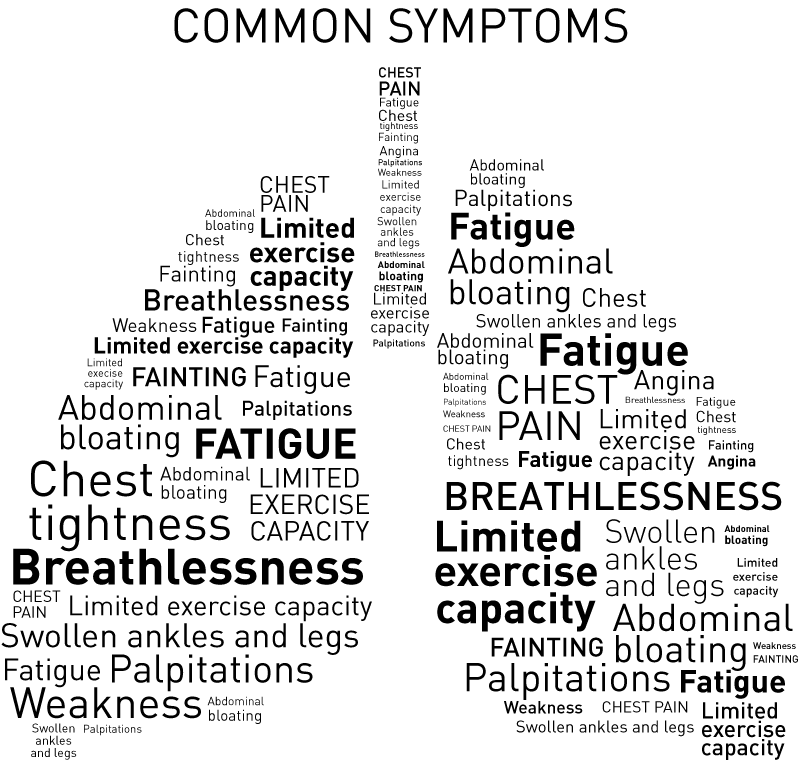
WHO GETS PAH AND WHAT CAUSES IT?
"WE KNOW A LOT MORE NOW THAN WE USED TO ABOUT HOW THE DISEASE DEVELOPS, AND IT COULD BE ANYONE WHO FINDS THEY ARE DIAGNOSED WITH PAH."
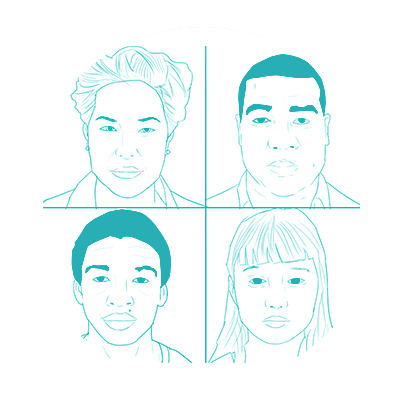
-
HOW COMMON IS PAH?
-
- PAH is a rare condition that can affect women, men, and children of any age or ethnic background.
- Only 15 to 50 people in a million are affected by PAH. This is why many people do not know about PAH.
-
WHAT CAUSES PAH?
-
We still do not fully understand PAH. But while the exact cause of PAH is unknown, some of the disease mechanisms that lead to its development are known.
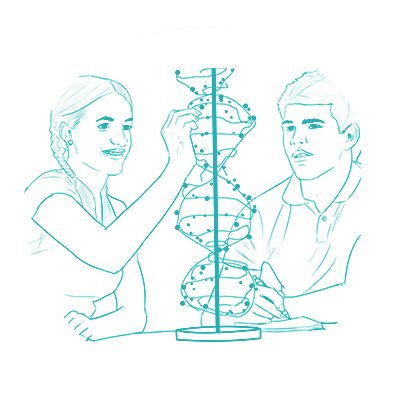
TYPES OF PAH
THERE ARE MANY TYPES OF PAH. OFTEN IT IS IDIOPATHIC, WHICH MEANS IT IS NOT LINKED TO ANY OTHER CONDITION. RARELY IT CAN RUN IN FAMILIES.
In some cases, PAH may be associated with other conditions, such as congenital heart disease or connective tissue disease. Some of the causes are known and some have yet to be identified. A PAH doctor can help people with PAH understand what type of PAH they have. Regardless of what type of PAH they have, the treatment options remain the same.
DIAGNOSIS AND TREATMENT OF PAH
PAH IS A PROGRESSIVE DISEASE AND THE RATE AT WHICH IT WORSENS VARIES DEPENDING ON THE TYPE OF PAH.
Early diagnosis is important as it has been shown to be linked with better outcomes. However, PAH is difficult to diagnose. A key problem is that the early symptoms (breathlessness, dizziness and fatigue) are not very specific and can be easily confused with many other, more common conditions such as asthma, chronic obstructive pulmonary disease (COPD) or sleep apnea.
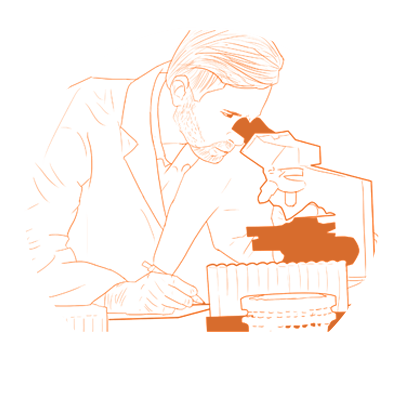

PROGRESSION OF PAH
Functional Class is a common term used in PAH. It is a critical element of the assessment of patients with PAH and determining treatment planning.
-
CLASS I
-
Physical activity is not limited. Ordinary physical activity does not cause extra tiredness, rapid heartbeat, or shortness of breath.
-
CLASS II
-
Physical activity is slightly limited. Comfortable at rest, but ordinary physical activity results in tiredness, rapid heartbeat, or shortness of breath.
-
CLASS III
-
Greater limitation of physical activity. Comfortable at rest, but less than ordinary activity causes tiredness, rapid heartbeat, or shortness of breath.
-
CLASS IV
-
Unable to do any physical activity without discomfort. Symptoms of heart problems at rest. Any physical activity increases discomfort.
PAH DIAGNOSTIC TESTS
"THERE IS NO SINGLE TEST TO DIAGNOSE PAH."
Due to its complexity, PAH is usually diagnosed at specialist centres and involves a series of tests to rule out other possible conditions, and confirm diagnosis.

-
ELECTROCARDIOGRAM (ECG)
-
This test uses electrodes which are attached to the skin to detect and record the electrical activity of the heart over time. It shows heartbeats and provides important information about the heart chamber size and position and tissue damage.
-
ECHOCARDIOGRAM
-
This test uses ultrasound to image the heart and can help diagnose, manage, and follow-up patients with any suspected or known heart disease. Among many things, it shows the size and shape of the heart chambers, the thickness of the muscular walls, the heart’s pumping ability, and how well the heart relaxes. It can also provide an estimation of the pressure in the heart and the pulmonary arteries.
-
VENTILATION / PERFUSION SCAN (V/Q SCAN)
-
The ventilation/perfusion scan or V/Q scan is used to evaluate the presence of blood clots in the lung’s vessels.
-
PULMONARY FUNCTION TESTS (PFT)
-
This test measures how well air moves in and out of the lungs, the volume of air that can be held and how effectively oxygen and carbon dioxide is transferred.
-
RIGHT HEART CATHETERISATION
-
Diagnosis of PAH is confirmed using a technique called right-heart catheterisation. A very thin, flexible tube to measure the blood pressure, oxygen content and cardiac output in the chambers of the heart and arteries is introduced through the skin into blood vessels and from there to the heart.

PAH THERAPY OPTIONS
IT IS IMPORTANT TO START TREATING PAH AS EARLY AS POSSIBLE.
Treating PAH as directed by a PAH doctor can help keep PAH from getting worse. While there is no cure for PAH yet, there are treatments that can help people manage their PAH.
-
SPECIFIC TREATMENT OF PAH
-
There are several specific medicines to treat PAH. These medicines target three so called "pathways", each representing certain biological processes that play an important role in the development of the disease.
Different molecules and a series of actions that are responsible for normal cell function are involved in each pathway. Changes in the way that a molecule is produced or in the way it interacts with other components in the pathway can cause the disease.
Different types of medicines are therefore used to treat each pathway:
- "Endothelin" pathway: targeted by Endothelin receptor antagonists (ERAs)
- "Prostacyclin" pathway: targeted by Prostacyclin receptor agonists
- "Nitric oxide" pathway: targeted by Phosphodiesterase (PDE5) inhibitors and Soluble guanylate cyclase (sGC) stimulators
All listed medicines relax and widen the blood vessels in the lungs as well as reduce and prevent the overgrowth of cells in the walls of the vessels. These effects make it easier for the heart to pump blood through the lungs. This should lead to an improvement in the level of physical activity and well-being, as well as slow down the progression of PAH over time.
-
TREATMENT PATHWAY INFOGRAPHIC

-
OTHER PAH TREATMENTS
-
There are several treatments that can help relieve symptoms of PAH, including:
- Blood thinners to prevent clots
- Diuretics (also called water tablets) to reduce swelling
- Drug treatments to increase the strength of the heart and slow the heart rate
- Supplementary oxygen to ensure the body has enough oxygen
-
MORE THAN ONE MEDICINE
-
To help people with PAH get the best quality of life possible, PAH doctors may give them one, or more than one, medicine at a time. The PAH doctor will choose the medicine (or medicines) that will best help each person with PAH do things today and help them continue to reach future goals. Adjustments in PAH treatment may not necessarily mean something is wrong, it may just be required to optimize the treatment.
-
LUNG TRANSPLANTATION
-
In very severe cases of PAH, when PAH medications are not successful, lung transplantation (or rarely heart and lung transplantation) may be considered by the PAH doctor.
BURDEN OF PAH
"IT’S NOT A GOOD FEELING. YOU FEEL INFERIOR – LIKE A SECOND CLASS CITIZEN” - PATIENT WITH PAH.
Whether walking to the local shops, picking up the children from school, meeting friends for a coffee, planning a holiday or the future, PAH is there at the forefront of their lives.
The international PAH patient and carer survey, supported by Actelion (now one of the Johnson and Johnson family of companies), revealed that the impact of PAH on those living with the condition extends far beyond the established physical symptoms of the disease itself.


IMPACT OF PAH ON THE PATIENT
"IT TOTALLY CHANGES YOUR LIFE - YOU CAN'T IGNORE IT." - PATIENT WITH PAH
PAH affects many aspects of daily life and it can take some time to adjust to living with the condition. It is important to know that many patients share similar experiences as they adapt to life with PAH, as uncovered by the international survey.
-
EMOTIONAL WELLBEING
-
Both living with the physical symptoms of PAH and making lifestyle changes as a result, can have an emotional impact on the patient.
Many patients are treated for depression, or regularly visit the doctor due to it. Many more, however, experience three or more depressive symptoms, without acknowledging that they have depression. It is therefore important for patients to talk to their doctors about how they are feeling beyond their physical symptoms.
-
FRIENDS AND FAMILY
-
‘My friend said, “I wish I had your kind of hypertension” and I was so upset by that. She thinks I am at home and just sitting around being lazy. They don’t understand I can’t do it, no matter how much I want to.
The lack of awareness of PAH impacts on the wellbeing of over half of all patients, many patients report feelings of isolation, often caused by their PAH not always being physically "visible".
More than 40% of patients also reported experiencing loss of libido/interest in sex.2
-
HOME, WORK AND INCOME
-
Almost half of patients said they were unable to work or needed help to work as a result of their condition. Nearly three quarters of patients who had to stop or change their work due to PAH said this had affected their overall household income.
Day-to-day chores can prove to be a significant challenge, 83% of patients find their condition negatively impacts their ability to do their domestic housework.2
-
LEISURE ACTIVITIES
-
‘PAH can be isolating, sometimes I have no desire to socialise – sometimes I don’t want to go out and talk to people.’
Almost all of patients found their ability to take part in sports or exercise was affected and over half said their leisure and cultural activities were affected.
IMPACT OF PAH ON THE CARER
"LIVING WITH SOMEONE WITH PAH IS LIKE NOT KNOWING WHAT TO EXPECT, I DON'T KNOW HOW IT WILL DEVELOP." - CARER
PAH affects many aspects of daily life and it can take some time to adjust to living with the condition. It is important to know that many carers share similar experiences as they adapt to looking after someone with PAH, as uncovered by the international survey.
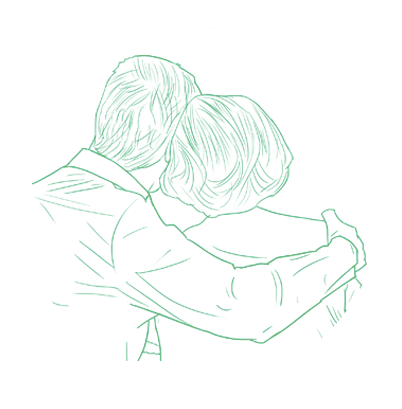
-
EMOTIONAL WELLBEING
-
Two out of three of carers report feeling afraid of what the future holds for their relative, and 21% worry that they ‘should be doing more’.
-
FRIENDS AND FAMILY
-
It was reported that 30% of carers said they felt isolated or excluded as a result of their role. Carers see the overall impact of their relatives’ PAH on their daily lives as very high.
Almost three-quarters of partners of PAH patients reported a decrease in sexual relations and intimacy, due to the carer’s fear of making the person they care for more ill.
-
HOME, WORK AND INCOME
-
Just under a third of carers reported stopping work or changing their working conditions as a result of caring for a person with PAH, with 13% stopping work completely.
45% of carers are now involved in the tasks their relative used to manage, with 43% reporting they feel exhausted more frequently due to the extra responsibility. If you are a carer, naturally the burden falls on you to do more and more.
-
LEISURE ACTIVITIES
-
Half of carers’ time is spent caring for someone with PAH. One third of carers felt socially isolated or excluded and, of these, 61% found this had a significant impact on their daily life.
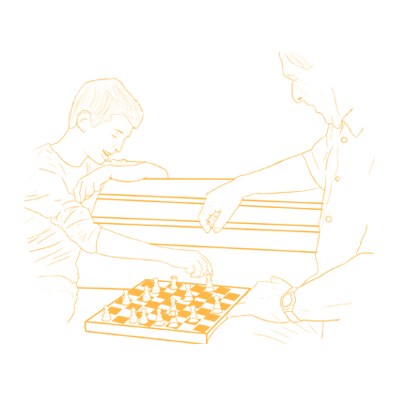
PAH - PRACTICAL GUIDANCE
EVERYONE WILL EXPERIENCE THEIR OWN REALITY OF LIVING WITH PAH.
If you are a patient with PAH, this section has been developed to provide you with additional information on what to expect when living with PAH and practical guidance to help you manage your feelings, manage your well-being, and move forward with a life beyond PAH.
Living with and managing PAH symptoms can have a significant emotional impact. It is important to know that you are not alone. These feelings are very common among people with PAH. Your family, friends and other important people in your life, together with your PAH doctor and your patient associations, are there to support you when you need it.
-
SHARE YOUR THOUGHTS AND FEELINGS
-
People who do not know about PAH may not fully understand how you are feeling. To them, you may look and seem healthy in terms of your appearance. But underneath, you may be experiencing a range of feelings or limitations. You may wish to share some information about how PAH affects you. This can help others understand why you cannot always do what you used to or want to do.
-
TALK ABOUT YOUR CONDITION
-
Although, at first, you may feel embarrassed to talk openly about PAH and its effects on your quality of life, talking to someone can be helpful. You may find comfort in sharing your thoughts, feelings, and experiences with a friend or relative and with your PAH doctor or nurse. A good relationship with others allows you to discuss your concerns more easily. The more your support network knows and understands about you, the better they can help.
-
TALKING TO PEOPLE WHO KNOW PAH
-
Sometimes it is difficult to talk to your family or friends about certain topics. In this case, ask your PAH doctor for help in finding someone in your area who you can talk to, like a social worker, counsellor, or psychologist. Patient associations can also be a great source of support and comfort in helping you with all aspects of day-to-day living with PAH.
-
LEARN FROM OTHERS’ EXPERIENCES
-
Speaking with other patients that are doing well with PAH can be a great way of learning how to manage your own condition.
-
SET GOALS AND MAKE ACTIVE CHOICES
-
There are many choices you can make to help maintain your health whilst living with the symptoms of PAH. Making these choices can help you to achieve the things you want.
Eating healthily, being active, learning how to cope with tiredness, and sharing your feelings are just some of the things that can make a big difference to how you feel and how you adjust to living with PAH.
"BEFORE I DID RUNNING AND NOW I DO WALKING, I TRY TO FOCUS ON THE THINGS THAT I CAN DO" PATIENT WITH PAH
-
EATING HEALTHILY
-
Just like everyone else, you should aim to eat healthily and to achieve and maintain a healthy weight. If you notice any significant weight loss or gain, tell your PAH doctor.
Speak with your doctor about additional considerations for eating well with PAH. Certain foods, especially those with a high salt content, can contribute to swelling or build-up of excess fluid in your body. Your doctor will also be able to advise you on any food or vitamins that may interact with your medicines and therefore should be avoided.
-
EXERCISE AND PAH
-
What is the right level of exercise for you?
It may be hard to know how much or what type of exercise is possible with PAH and the protocol for exercise is individualized for each patient. With help from your PAH doctor, you can figure out the level of activity that is appropriate. Choose activities that you enjoy and that make you feel good.
Here are some helpful tips:
- Start out slowly and listen to your body
- Have enough breath to be able to talk
- Adjust your activity before you become tired
- If you experience any symptoms that concern you, for example dizziness or chest pain, seek medical advice
If you have any concerns or simply want to have reassurance that you are doing the right amount of activity, speak to your PAH doctor. Gym instructors, personal trainers, or people with similar jobs may not understand how PAH can affect an individual.
-
JOINING A PATIENT ASSOCIATION
-
"THE PATIENT ORGANIZATION KEEPS YOU UP TO DATE WITH THINGS AND YOU'RE NOT ALONE" - PATIENT WITH PAH
There are many patient associations across the world that are dedicated to supporting patients, carers and their families to live well with PAH.
If you haven't already joined a patient association or are unfamiliar with what they offer their members, patient associations can be invaluable in supporting patients and their families to learn more about living well with the condition, meet other people affected by PAH and share experiences, and provide advice on welfare and benefits you may be entitled to in your country of residence.
-
MANAGING TIREDNESS
-
A common symptom of PAH can be extreme tiredness. It may feel different from feeling run down or tired from lack of sleep. Getting to know your body and understanding the signs it gives are important. This will enable you to rest when your body needs it.
Keeping notes or a diary of when you have felt particularly tired will help you to notice, and then avoid, specific triggers. A diary can help you know the times of the day that you are at your best and which activities use the most energy. This can help you adapt to situations and plan for both your everyday activities and the bigger events in your life.
-
STARTING A FAMILY
-
Pregnancy is very risky and associated with an increased chance of severe complications for the mother and the unborn child. It is highly recommended to speak to your PAH doctor and seek medical advice if you plan to start a family or become pregnant.
-
WORKING
-
Your ability to keep working is based on how you feel, the choices you make, and the type of job you have. Your employer may offer you some flexibility as well.
-
EDUCATION
-
For children still at school and people in higher education who have PAH, consider speaking to the appropriate person in authority at that institution so that they can provide support if practical changes are needed, for example rearranging a timetable, assignments or exams.
-
SUPPORT SERVICES
-
Ask at your PAH Centre for advice on finding more information on support services that are available to you.
-
TRAVELLING
-
It is important that you talk with your doctor if you plan to travel, especially if you plan to take a flight or visit places at higher altitudes.
Altitude may cause breathing difficulties, so you should check well in advance with your doctor before booking your flight. You may need supplemental oxygen on board or other additional assistance at the airport. It is also important to ensure that you are covered by the appropriate insurance (i.e. medical and/or travel insurance).
-
YOU ARE NOT ALONE
-
It can be easy to feel isolated by your condition, especially when you are first diagnosed, but it is important to remember that other people are going through similar experiences and learning to live fulfilled lives with PAH.
YOU ARE STILL YOU
Regardless of the fact that you have just learned you have PAH, or have been living with PAH for a while, you are still you. Making adjustments to your everyday life, based on how you are feeling and what you want to do, will help you stay in control of your life.
This educational resource is not intended to replace discussion with your healthcare team. If you have any questions after reading the content contained in this e-book, please seek further information or explanation from your doctor or an appropriate healthcare professional.
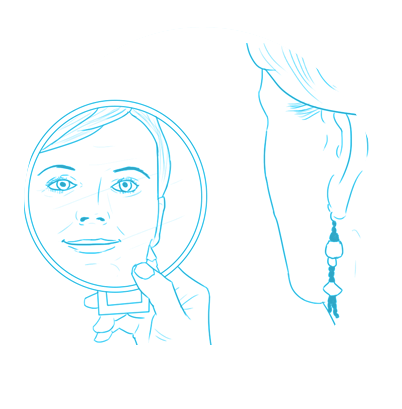
Disclaimer
This ebook has been developed by Janssen Cilag Pty Ltd (“Janssen”) in order to provide an environment to deliver a better understanding on Pulmonary Arterial Hypertension (PAH) and to pool information regarding the disease, the diagnosis procedure, available treatments and the impact it could have on the life of someone diagnosed with PAH. The book is for the use by a general audience.
The information in this book is not intended as a substitute for advice/treatment by a physician, whose instructions should always be followed. Neither does the information provided constitute an alternative to advice from a doctor or a pharmacist nor should it be used on its own to produce a diagnosis or to commence or cease a particular treatment.
The links provided are for informational purposes only; they do not constitute an endorsement or an approval by Janssen of the services or opinions of the corporation, organization or individual. Janssen bears no responsibility for the accuracy, legality or content of the external sites or subsequent links. You are requested to contact the respective external site for answers to questions regarding its content.
The information provided is valid as per September 2020 but may be subject to further modifications. Even though Janssen aims to provide accurate and up to date information at all times, you acknowledge that the present book is made available “as is”. Janssen does not give any warranty or representation, whether expressly or implied, of any kind related to the content of this book. Janssen takes no liability for the accuracy, adequacy, completeness, comprehensiveness, usefulness, reliability or timelines of the content of this book. Janssen cannot be held liable for any direct or indirect damage of a material or non-material nature that might be caused by the use or non-use of the information presented.
This book is intended for an Australian audience.
References
The information mentioned in this eBook is derived from the following sources:
- Galiè et al. 2015 ESC/ERS Guidelines for the diagnosis and treatment of pulmonary hypertension. Eur Heart J 2015
- The impact of pulmonary arterial hypertension (PAH) on the lives of patients and carers: results from an international survey (2012)
- European Lung Foundation – Lung Fact Sheet www.european-lung-foundation.org
- Lung Foundation Australia – PAH fact sheet www.lungfoundation.com.au
- National Organisation for Rare Diseases rarediseases.org/rare-diseases/pulmonary-arterial-hypertension/


